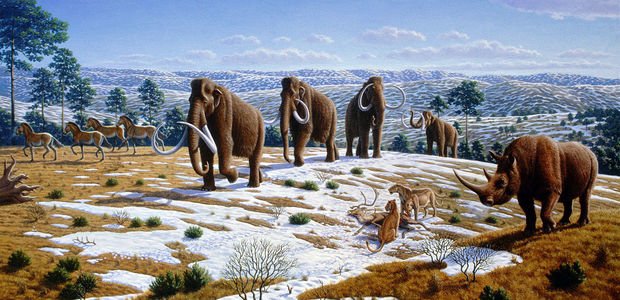Palaeogenetic scientific centre to open in Siberia
Scientists eye launching de-extinction programmes
Woolly mammoth, cave lion and other long-gone species may be once restored by Russian scientists in a new ''world-class palaeogenetic scientific centre'' that is supposed to open in Yakutsk. The unique environment also allows studying origins of rare genetic disorders present within North-Eastern Russian ethnic groups.
Russian scientists in collaboration with South Korea are gearing up to open a £4,5-million animal cloning facility in the world's coldest city of Yakutsk, reports The Post Millennial, adding that Yakutsk is the home of 80% of the samples of Pleistocene and Holocene soft animal tissues preserved in permafrost for tens of thousands of years. The woolly mammoth, woolly rhinoceros, cave lion and various breeds of extinct horses are among the targeted species for the de-extinction process.
The facility will be based at Russia's North-Eastern Federal University. The university already has strong cooperation with South Korean Sooam Biotech Research Foundation led by cloning expert Professor Hwang Woo-suk. The centre will also work in collaboration with Harvard University geneticist Professor George Church. By 2020, the researchers aim to inset woolly mammoth genes into an Asian elephant embryo. In case of success, the elephant-mammoth hybrid may be allowed to roam freely within a controlled environment that simulates the mammoth's natural habitat. The project will act as a precursor for future de-extinction programmes.

Besides, the centre will study rare genetic disorders that persist in North-Eastern Russian ethnic groups. These disorders may have originated in extinct tribes. ''Northern ethnic groups have a unique ancient genetic structure,'' commented expert Elena Grigorieva while drafting plans for the centre. ''Such studies will help in the study of rare genetic diseases, their diagnosis, prevention.''
The ambitious project follows last year's breakthrough in reproductive and cloning technology when American researchers managed to keep alive and grow up a lamb fetus in an artificial womb for four weeks. Thus, they have proved that it was possible to give birth artificially, without a mother's bodily involvement. Now it looks like most of the tools are in place for cloning – you only need the DNA of a species to bring it back to life, clone it and create an entire population from a single genetically modified tissue sample, believes The Post Millennial.